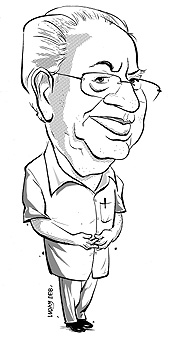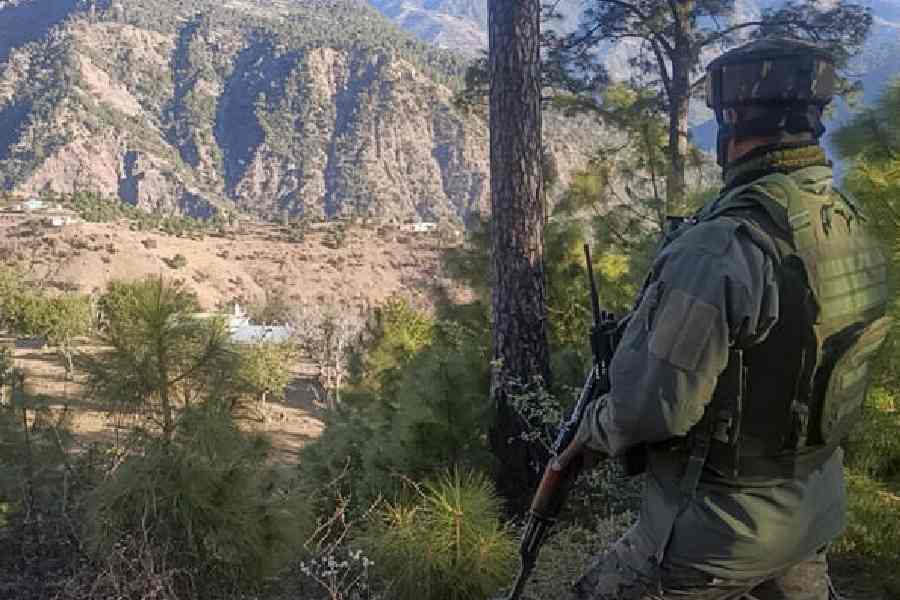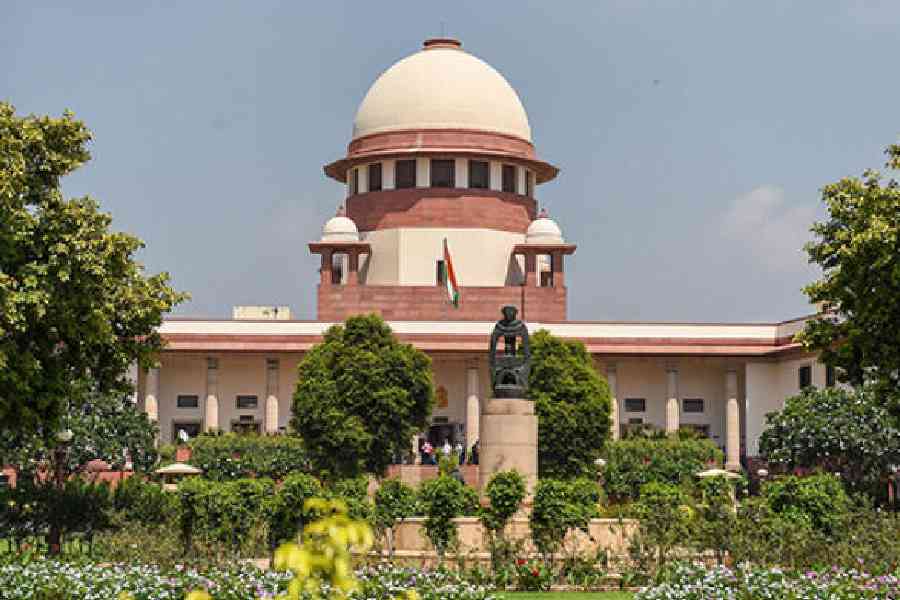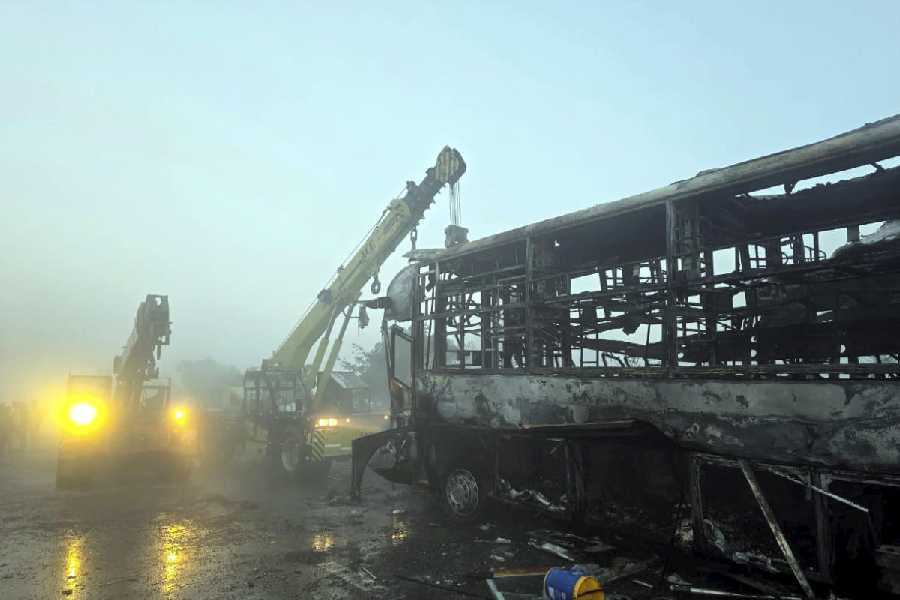 |
Once, he frequently hit the headlines — for being a public sector guru, and then because he was accused of hanky panky and jailed. Today, the Gandhi family’s favourite technocrat has been rehabilitated — as chairman of the National Manufacturing Competitiveness Commission.
His 82 years sit lightly on Venkataraman Krishnamurthy as he sits behind a burnished bean-shaped desk in New Delhi’s Vigyan Bhavan annexe. He has put on weight. He used to swim but has given it up. He is not wearing his trademark white safari suit today — he is to meet a foreign visitor at 5 pm.
He first bought the safari suits on a trip to Malaysia in 1969-70, when he was general manager at Bharat Heavy Electricals Ltd (Bhel). “A Connaught Place tailor developed a design for me which was simple and elegant. The advantage of safari suits is that one doesn’t have to wear a suit in office.”
But why white? “The moment you start using colour, you compete with others.”
That’s a telling comment from a man with a rare track record in managing or launching state-owned companies — Bhel, the Steel Authority of India (Sail) and Maruti Udyog.
The fall came when he was mired in a scandal in 1992. He was then a Planning Commission member and accused of accepting a Rs 32.74 lakh loan (which the CBI later said was a bribe) from stock broker Harshad Mehta and of having arranged a Rs 70 lakh bank loan for a company his two sons ran. He clarified that the loan had been arranged before he joined the Planning Commission. Questions were also raised about how he and his US-based sons had come to own several companies. He’d said that he and other associates had bought and turned around sick companies and that his US-based sons had pumped money into them.
Krishnamurthy was arrested and held in a two-bed room flat at the CBI complex in the capital for three weeks. “It was total isolation — I had no communication with even my family,” he recalls. It took six years for his case to come up before a judge, who ruled that the CBI had no case. “I wasted six years,” he rues.
More than a decade later, the bitterness lingers. Krishnamurthy blames a senior aide (now deceased) of then Prime Minister P.V. Narasimha Rao and maintains he was targeted because he criticised the sale of the government’s 50 per cent of equity in Maruti to Japan’s Suzuki Motor Corporation. “They used the official machinery to discredit me while I was arguing with them on an intellectual plane,” he says.
Krishnamurthy believes that Rao bore him a grudge. “He never excused me for having advised Rajiv. Rao always thought that Rajiv treated me better than his senior colleagues.” The dislike appears to have been mutual. “Rao could never believe that somebody else could have better ideas. He had some weaknesses, in spite of all his scholarship.”
Vignettes from the past bubble over. Indians would not have driven Maruti cars at all had Tata Motors (then Telco) head Sumant Moolgaonkar (who was Maruti chairman while Krishnamurthy was vice chairman) had his way. “Moolgaonkar said only a commercial vehicle would succeed. He didn’t want a car.” Moolgaonkar eventually left Maruti.
Maruti, a company started by Sanjay Gandhi, was nationalised by Indira Gandhi’s government shortly after Sanjay’s death in 1980. The government was initially considering a sedan for the Maruti project. Krishnamurthy and his team plumped for a small car on the basis of a market survey. They spent time in Europe and Japan, looking at several cars. Suzuki wasn’t initially interested till it learnt that Nissan and Mitsubishi were serious contenders.
“Suddenly one day Suzuki chairman Osamu Suzuki turned up at the Imperial Hotel in Tokyo. We hit it off well. He was apprehensive that it was a government organisation. I had to give him assurances,” Krishnamurthy says. He now recalls how Indira Gandhi got very emotional the day the first car rolled out — on December 14, 1983, Sanjay’s birthday.
The Maruti success story was the second feather in Krishnamurthy’s cap. The first was Bhel. In 1972, the public sector was under attack and Indira Gandhi wanted something drastic to be done to alter its image. Then ministers Mohan Kumaramangalam and C. Subramaniam asked Krishnamurthy, a relatively junior general manager at Bhel’s Trichy plant, to take over as Bhel chairman, a post till then reserved for retiring chairmen of the Railway Board. His success with the Trichy plant had catapulted him to attention.
Gandhi wanted to break up big state-owned companies. Indian managers, she told Krishnamurthy, were not qualified to manage large enterprises and smaller companies had shown better results. Krishnamurthy asked her for a year’s time. “At the end of one year, I made a presentation saying that Bhel should not be broken up but two other organisations should get merged with it.” When he became chairman in July 1972, its profit was Rs 17 crore. When he left in August 1977, it had shot up to Rs 57 crore.
By then, the Janata Party had come to power and Prime Minister Morarji Desai, who wanted to induct a few technocrats, appointed him industry secretary. When the Congress rode back to office in 1980, Krishnamurthy had a falling out with his minister and his contract was terminated. When Mrs Gandhi came to know, she asked him to run the Maruti project. “Everybody is ridiculing us over the people’s car project. I can get any number of advisors in the Planning Commission but I can’t get a good manager. Set up the plant and get it going,” she told him. Rajiv was told to give whatever support he wanted. That was the start of a close relationship with Rajiv.
When Rajiv became Prime Minister, he asked Krishnamurthy to take over Sail. “I said, you are mad, Sail requires a younger man.” But Rajiv persuaded him to take over for two years. Krishnamurthy would remain at Sail for five years.
The relationship with Rajiv would become closer when he was out of power. Krishnamurthy was part of a group that brainstormed with Rajiv every day on a different subject. “His learning period came after he left his job.” The others were telecom czar Sam Pitroda, Gen. K.V. Krishna Rao, former diplomat M.K. Rasgotra, the late economist A.M. Khusro and Manmohan Singh. “The Congress Party manifesto of 1991 was prepared there. I was asked to informally meet groups of Congress MPs to sell them economic reforms,” Krishnamurthy says. It is a “great misconception”, he says, that Narasimha Rao was responsible for reform. “He was the man who was totally opposed to it.”
The soft-spoken technocrat belonged to a once-landed family of Thanjavur, Tamil Nadu. Krishnamurthy studied engineering in Chennai and worked for the state government for a few years. But he wanted to leave Tamil Nadu because he felt his family was being targeted for being close to C. Rajagopalachari. In 1954, he joined the Planning Commission as a research officer. He was assigned atomic energy and power — topics that put him in touch with Jawaharlal Nehru. He soon found himself sitting alongside Nehru, Chintamani Deshmukh, V.K. Krishna Menon and T.T. Krishnamachari (all government ministers).
“I was the clerk of the court. Somebody had to take notes,” he laughs. So in his late 20s, he got a ringside view of national policies being forged, of West Bengal chief minister B.C. Roy fighting for the Durgapur steel plant. He learned to look at problems from a wider perspective.
While at the Planning Commission, he had been a member of a working group on producing electrical equipment in India. L.K. Jha, who was then heavy industry secretary (and later suggested his name to Indira Gandhi for Maruti), seconded him to Bhel. K.B. Mathur, who was Bhel’s first chairman, gave Krishnamurthy a free hand and the 35-year-old found himself picking sites for Bhel’s plants and negotiating with the Russians and the Czechs. Senior executives complained to then industry minister Lal Bahadur Shastri that too much power was vested in one individual. Mathur sent him to Shastri. He later told Krishnamurthy, “I wanted the minister to see you and understand you.”
In all these years, Krishnamurthy says, no minister interfered with him, perhaps because he always had the Prime Minister’s backing. So the ministers he reported to dropped in on him, instead of the other way round.
Looking back, what was his biggest failure? “I wasn’t able to sense the political atmosphere during the Rao years.” And his biggest success? “I was able to motivate people.” Over to Sail and Bhel employees.










